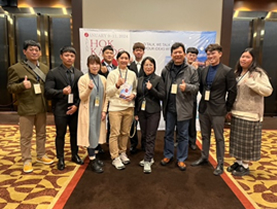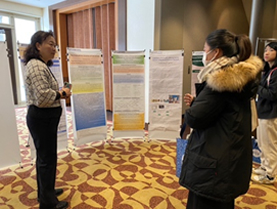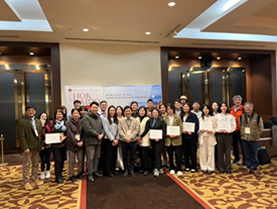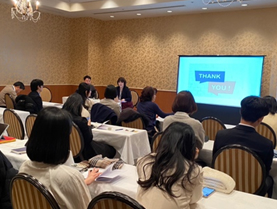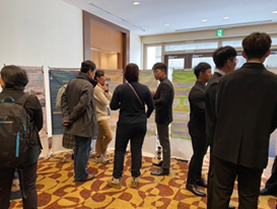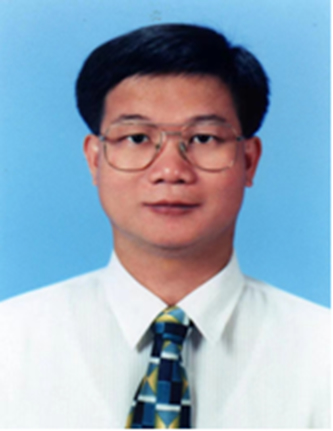2024 LSBE
International Conference on Engineering and Technology
January09-11, 2024 in Hokkaido, Japan
Local Host
Michiko Miyamoto studied at the State University of New York College at Buffalo, where she received her Bachelor of Science degree (magna cum laude).She received her MBA from the University of California at Los Angeles.After a 7-year career with Goldman Sachs and Company, obtained her PhD further to a thesis about Econometrical Approaches to Economic and Strategic Management Studies at the University of Tsukuba, Graduate School of Systems Management.In 2008, she joined the Department of Management Science and Engineering at the Akita Prefectural University. In May 2022, she joined the Department of Information and Data Science at the Nagasaki University.
Keynote Speaker
We are honored to announce that Dr. J.D. Yau has accepted our invitation to be a speaker at this year's Hokkaido Symposium. He will share his research findings on "Smart Vehicle Scanning Techniques for Bridge Inspection" with colleagues. We welcome everyone to join us in the snowy landscapes of Hokkaido, Japan, to experience the festive spirit of the New Year in 2024.
Brief Biography of J.D. Yau
Dr. J.D. Yau earned his Ph.D. from National Taiwan University (NTU) in 1996. Following his tenure as a chair-engineer at the Kuan-Tech Eng Consult Co. (1997-1999), he joined the faculty of Tamkang University (TKU) in 1999. At TKU, he has held the positions of Assistant Professor (1999-2003), Associate Professor (2003-09), Professor (2010-), and Chair (2004-2007) in the Department of Architecture and Building Technology. He also serves as a Supervisor of the Taiwan Association of Wind Engineering (TAWE, 2014-). In October 2023, Dr. Yau was recognized as one of the world's top 2% scientists (Career Impact) (1960-2023) by Mendeley Data, a company owned by Elsevier. He has authored over 60 peer-reviewed journal papers and articles on moving load problems. His primary research interests focus on the vibrations of high-speed rails, indirect frequency measurements of bridges, and maglev dynamics.
Selected publications (2019~2024):
| 1. | J.D. Yau*, S. Urushadze (2024), Resonance reduction for linked train cars moving on multiple simply supported bridges, J. Sound Vibr., 568, 117963. |
| 2. | YB Yang, JD Yau*, S Urushdaze, TY Lee (2023). Historical review on resonance and cancellation of simply supported beams subjected to moving train loads: from theory to practice, Int. J. Struct. Stab. Dyn. 23(16-18), 2340008. |
| 3. | Lou P, Yau JD*, Au FTK, Urushadze S (2022), Shifted resonance of railway bridges under trains passing by each other, Int. J. Struct. Stab. Dyn. 22(14), 2271001. |
| 4. | Wang, YJ, Yau, JD*, S Shi, Urushadze S (2022), Double sub-resonance mechanism in torsional–flexural vibrations of a double-track short bridge under a moving train, Int. J Struct. Stab. Dyn. 22(16) 2271005. |
| 5. | YB Yang, JD Yau*, S Urushdaze (2019). Wave transmission of linked railcars moving over multi simple beams under dual resonance. J. Sound Vibr. 452, 51-57. |
| 6. | JD Yau*, MD Martínez-Rodrigo, A Doménech (2019). An equivalent additional damping approach to assess vehicle-bridge interaction for train-induced vibration of short-span railway bridges. Eng. Struct. 188, 469-479. |
| 7. | J.D. Yau*, YB Yang, S. Urushadze (2019), Scanning the modal coupling of slender suspension footbridges by a virtual moving vehicle, Eng. Struct., 180, 574–585. |
Smart Vehicle Scanning Techniques for Bridge Inspection
1. Background
The vehicle scanning method (VSM) is a non-destructive bridge inspection technique that uses a test vehicle equipped with vibration sensors to scan the natural frequencies of a bridge. By measuring the vibration response of the test vehicle as it travels over the bridge, the natural frequencies of the bridge can be extracted. This idea is done using the vehicle scanning technique or indirect measurements proposed by Yang et al. in 2004 [1]. The VSM has several advantages over traditional bridge structure inspection methods. Firstly, it is non-destructive and does not require any instrumentation to be installed on the bridge. Second, it is relatively fast and efficient and can be used to measure the natural frequencies of a bridge without disrupting traffic. Thirdly, it is versatile and can be used to measure the frequencies of various bridge types. This study introduces and applies a novel method based on the Vehicle-Bridge Interaction (VBI) theory to identify the modal frequencies and the damage hangers of a tied-arch railway bridge using a moving instrumented vehicle. The VBI theory considers the vehicle as a dynamic information scanner that captures the frequency signals of the bridge through the VSM technique [2]. The study also examines how different vehicle speeds and hanger damage affect the coupled frequencies of the VBI system.
2. Procedures
The procedure for utilizing the VSM to identify the natural frequencies of a bridge is outlined as follows:
| 1. | Install vibration sensors and a data acquisition system on a test vehicle. |
| 2. | Drive the test vehicle across the bridge at a constant speed. |
| 3. | Record the vibration data from the accelerometers. |
| 4. | Extract the natural frequencies of the bridge from the vibration data. |
Then the vibration data from the accelerometers is processed using a Fourier transform to extract the frequency components. The frequency-domain signal shows the magnitude and phase of each frequency component in the time-domain signal. The natural frequencies of the bridge can be identified by looking for peaks in the frequency-domain signal. The peaks correspond to the frequencies at which the bridge is vibrating.

Fig. 1 Schematic of a tied-arch bridge.
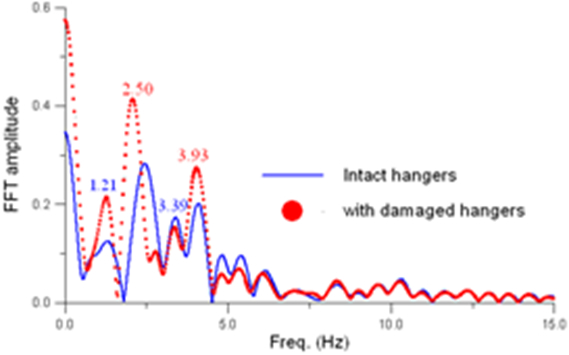
Fig. 2 Frequency detection of the bridge
3. Expected Results
Based on the VBI theory, a moving instrumented vehicle is designed as a dynamic information scanner to detect the damaged hangers of a suspended simple beam. The tied-arch railway bridge shown above is modeled by finite element method, the arch rib is modeled as a parabolic arch and the deck as a uniform beam supported by hinged ends, as shown in the Fig 1. The train-bridge interaction dynamic analysis will be carried out for the test vehicle moving on the bridge. Thus, we can detect the vertical vibration data of the bridge from the running test vehicle for identify the bridge frequencies using the contact-point response.
Hangers are crucial load-bearing components of cable-supported bridges and provide elastic support to the suspended bridge deck. Damage to hangers in a tied arch bridge can have a significant influence on the bridge's natural frequencies. This is because the hangers are essential for transferring the load from the deck to the arch, and any damage to them will reduce their stiffness and strength. Figure 2 shows how damaged hangers degrade the natural frequencies of a tied-arch bridge, as measured by the VSM-based contact-point response of a train running on the bridge.
Keywords: Arch, bridge, contact point response, frequency, VBI, VSM
References
Conference Venue
Premier Hotel -TSUBAKI- Sapporo
1-1, Toyohira 4-jo 1-chome, Toyohira-ku, Sapporo
Phone:+81 011-821-1111


